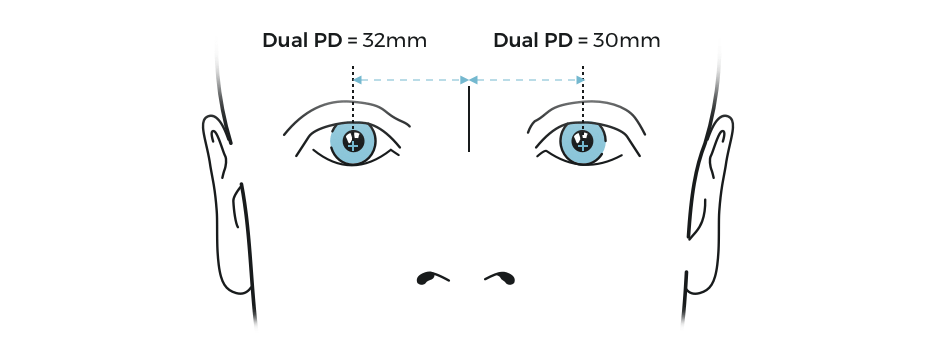Does the Solution Measure Both “Single” and “Dual” PD?
Yes — the PD Measurement solution provides both types of measurements: A binocular (single) PD value And, when users wear glasses during the measurement process, monocular (dual) PD values as well.
Single (Binocular) PD
The Binocular PD, also called Single PD or simply PD, represents the total distance between the centers of both pupils.

The unit of measurement is millimeters (mm)
This value is used to align the optical centers of the lenses with the pupils during lens mounting.
Single PD is typically sufficient for low or moderate prescriptions in single-vision (unifocal) glasses.
Dual (Monocular) PD
The Monocular PD, or Dual PD, represents the same total distance as the single PD, but split into two values — one for each eye.
It measures the distance from the center of the nose bridge to each pupil.

For example: Right PD = 32 mm & Left PD = 30 mm
→ Combined (Single) PD = 62 mm
Dual PD is often used for:
-
High prescriptions (unifocal lenses)
-
And is mandatory for progressive or multifocal lenses, where precision is crucial.
Which Is Better — Single or Dual PD?
Since our eyes are not perfectly symmetrical, one pupil may be slightly farther from the nose bridge than the other.
Because of this, a Dual PD provides more precise lens alignment and therefore a better visual fit.
That said, optical professionals generally agree that for low to moderate prescriptions, using a Single PD instead of Dual PD does not significantly affect comfort or vision.
Accuracy
The FittingBox PD Measurement solution delivers the same high accuracy for both Single and Dual PD values — as long as users follow the recommended usage guidelines (lighting, positioning, stability, etc.).
For folded or asymmetrical frames, minor bias may occur.
These cases result from irregular frame geometry and are outside the responsibility of FittingBox.